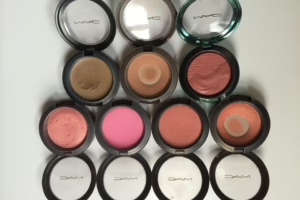The Science Behind Skincare: What Ingredients Actually Work?
Skincare has transitioned from a routine of cleansing and moisturizing into a multi-billion-dollar industry driven by an endless array of products, trends, and claims. Amidst the noise, consumers are often left wondering: what really works? Understanding the science behind skincare ingredients is essential for making informed choices about products that will genuinely benefit the skin.
The Skin Barrier: A Foundation for Understanding Skincare
Before diving into specific ingredients, it’s important to understand the skin itself. The skin has multiple layers, the outermost being the stratum corneum, which acts as a barrier to protect underlying tissues. The health of this barrier is crucial; it retains moisture and protects against environmental toxins, irritants, and pathogens.
Ingredients That Target Specific Skin Concerns
1. Hyaluronic Acid
Function: Hydration
Hyaluronic Acid (HA) is a naturally occurring substance in the body, primarily found in connective tissues. Its primary function in skincare is hydration due to its ability to retain moisture—up to 1,000 times its weight in water. This makes it an excellent ingredient for dry skin types.
- Clinical Evidence: Studies have shown that topical HA can significantly increase skin hydration and elasticity, reducing the appearance of fine lines and wrinkles^[1].
2. Retinoids
Function: Anti-aging, Acne Treatment
Retinoids, derived from vitamin A, are compounds celebrated for their versatility in addressing multiple skin concerns. They accelerate cell turnover, promote collagen production, and unclog pores.
- Clinical Evidence: Numerous studies confirm that retinoids improve skin texture, reduce fine lines, and effectively manage acne^[2].
3. Vitamin C
Function: Antioxidant Protection, Brightening
Vitamin C is an antioxidant that protects against free radical damage caused by UV exposure and pollution. It also plays a vital role in collagen synthesis and skin brightening.
- Clinical Evidence: Research indicates that vitamin C can enhance skin elasticity and reduce the appearance of pigmentation, giving a more radiant complexion^[3].
4. Niacinamide
Function: Anti-inflammatory, Barrier Repair
Niacinamide, or Vitamin B3, is known for its anti-inflammatory properties, making it effective for reducing redness and irritation. It also enhances the skin barrier, improves texture, and minimizes the appearance of pores.
- Clinical Evidence: Studies show that niacinamide can reduce sebum production and improve skin tone, making it a well-rounded ingredient for oily and combination skin types^[4].
Ingredients to Approach with Caution
5. Alcohols
Commonly found in toners and astringents, certain alcohols can be drying and irritating. Ethanol and isopropyl alcohol are culprits, particularly for sensitive skin types. In contrast, fatty alcohols like cetyl and stearyl alcohol are beneficial, as they moisturize the skin. Always check formulations closely.
6. Fragrance and Essential Oils
Though often included for sensory appeal, fragrances and essential oils can trigger allergic reactions and skin sensitivities. Products marketed as "fragrance-free" usually cater better to sensitive skin types.
The Role of Exfoliation
Exfoliation is an essential process to slough away dead skin cells, promote cell turnover, and reveal brighter skin beneath. There are two primary methods: physical (scrubs) and chemical (AHAs and BHAs).
7. Alpha Hydroxy Acids (AHAs)
Function: Chemical Exfoliation
AHAs, such as glycolic and lactic acid, dissolve the bonds that hold dead skin cells together, promoting smoother skin texture.
- Clinical Evidence: Research shows that AHAs can improve skin luminosity and reduce the appearance of fine lines^[5].
8. Beta Hydroxy Acids (BHAs)
Function: Acne Treatment
Salicylic acid, the most common BHA, penetrates deeply into the pores to exfoliate and eliminate excess oil, making it particularly effective for acne-prone skin.
- Clinical Evidence: Clinical studies demonstrate that salicylic acid effectively reduces acne lesions and prevents new breakouts^[6].
Antioxidants: The Skin’s Defense
Antioxidants play a crucial role in defending the skin against environmental stressors.
9. Green Tea Extract
Function: Anti-inflammatory, Antioxidant
Rich in polyphenols, green tea extract provides anti-inflammatory properties that can help reduce redness and irritation.
- Clinical Evidence: Studies have shown that applying green tea extract topically can reduce UV damage and improve skin elasticity^[7].
10. Coenzyme Q10
Function: Energy Production, Antioxidant
Coenzyme Q10 is a powerful antioxidant that supports skin cell energy production and reduces the visible signs of aging.
- Clinical Evidence: Research indicates that CoQ10 can improve skin texture and decrease wrinkle depth^[8].
The Importance of pH Balance
11. pH-Balanced Products
Maintaining the skin’s natural pH is critical for the barrier’s function. Most products should ideally have a pH between 4.5 and 5.5. Products exceeding this range can disrupt barrier function, leading to irritation and inflammation.
- Clinical Evidence: Research shows that using pH-balanced products can prevent skin disorders like eczema and rosacea^[9].
Optimal Ingredients for Sun Protection
12. Sunscreen Actives
Function: UV Protection
Chemical and physical sunscreens provide essential protection against ultraviolet radiation, which is a significant factor in skin aging and cancer.
- Clinical Evidence: Studies confirm the efficacy of both mineral (zinc oxide, titanium dioxide) and chemical (oxybenzone, avobenzone) sunscreen agents in reducing the risk of skin cancer and photoaging^[10].
The Final Word: Personalization in Skincare
As understanding of skin biology advances, the importance of personalized skincare has come to the forefront. Factors such as age, skin type, and specific concerns should inform your skincare regimen.
Customizing Your Skincare Routine
- Consult Professionals: A dermatologist can help identify crucial issues and recommend appropriate treatments.
- Patch Testing: Always perform patch tests with new products to ensure no adverse reactions arise.
- Slow Introduction: Incorporate new products gradually to monitor skin response.
Conclusion
The skincare industry is evolving rapidly, with a continuous influx of innovative ingredients and approach. However, effective skincare is rooted in understanding the science behind the ingredients. By prioritizing products based on solid research and individual skin needs, one can navigate the vast landscape of skincare products more effectively.
In making informed decisions, consumers can ultimately cultivate a skincare routine that not only addresses their concerns but also supports long-term skin health. Always remember that while products can enhance your routine, consistent practices like sun protection, hydration, and nutrition form the foundation of healthy skin.
References
- Liu, Y. et al. (2016). "The Moisturizing and Anti-Aging Effects of Hyaluronic Acid." Journal of Dermatological Treatment.
- Kang, S. et al. (2016). "Antiaging Effects of Topical Retinoids on Human Skin." Dermatologic Surgery.
- Pamplona, J. et al. (2017). "Topical Vitamin C: A Review on Its Effectiveness." Photodermatology, Photoimmunology & Photomedicine.
- Draelos, Z. D. (2015). "Niacinamide in Dermatology: A Review." Journal of Clinical and Aesthetic Dermatology.
- Yoshida, J. et al. (2018). "Efficacy of Alpha Hydroxy Acids on Fine Wrinkles." Dermatologic Surgery.
- Bowe, W. P., et al. (2017). "Salicylic Acid: A Review of its Dermatological Applications." American Journal of Clinical Dermatology.
- Katiyar, S. K. et al. (2019). "Green Tea Polyphenols: Role in Skin Protection." Clinical Interventions in Aging.
- Wang, H. et al. (2015). "Coenzyme Q10 and Skin Health." Journal of Cosmetic Dermatology.
- Agarwal, R. et al. (2010). "The Role of pH in the Barrier Function of the Skin." Journal of Dermatological Science.
- El-Shourbagy, S. H. et al. (2019). "The Role of Sunscreens in Skin Cancer Prevention." Journal of Dermatological Treatment.


























Add Comment